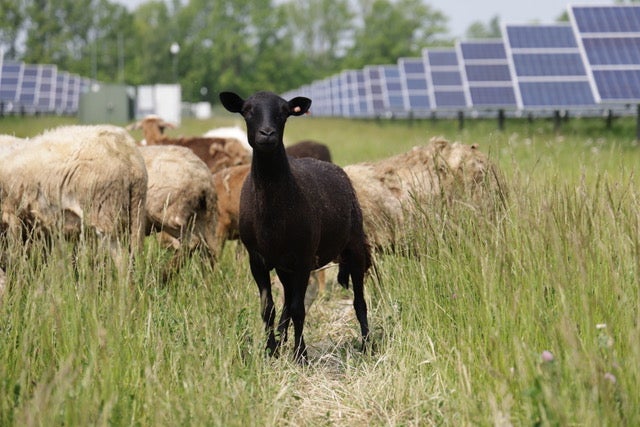Office of Energy and Sustainability
Agrivoltaics
Agrivoltaics is the practice of co-locating solar panels with agricultural crops or grazing land. This practice has been around since at least the early 1980s but has recently reemerged as a valuable tool to enable renewable electricity production without taking away agricultural land.

Sheep grazing as an alternative to mowing with combustion based machines, not only decreases greenhouse gas emissions and maintenance costs for the college, but also increases land productivity and resource efficiency. Because of the estimated reduced fuel used, the Agrivoltaics Project is expected to contribute to reaching the Oberlin College and Conservatory goal of carbon neutrality by 2025.
Oberlin considered agrivoltaics for a few years but recently made strategic connections and partnerships to implement the method on an existing solar array.
In 2023 Oberlin College partnered with Old Slate Farm – a sheep and flower farm in Mount Vernon, Ohio – to manage plant growth on the campus’ solar field. The Katahdin Sheep from Old Slate Farm will come to the campus’ 12 acre 2.27 MW solar field near North Fields for a couple weeks about three times over the course of April to October of each year.
Field health is important. The existing grasses were not very attractive to sheep because of the texture and nutritional value. That prompted a pre-step to frost seed with white clover (laying seeds on the last bit of spring snow). That enabled a much healthier and tastier variety of vegetation to grow this year. Over future years, the variety of vegetation in the field will change to be even healthier and tastier for the sheep.